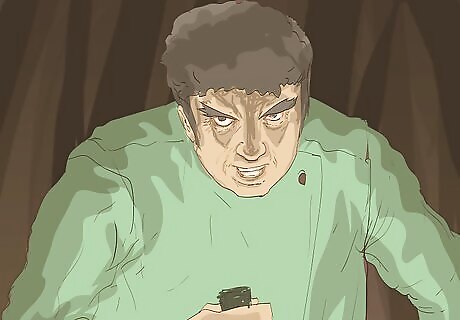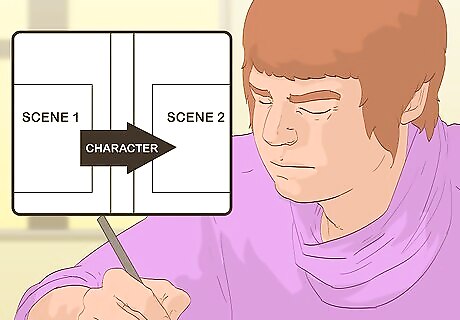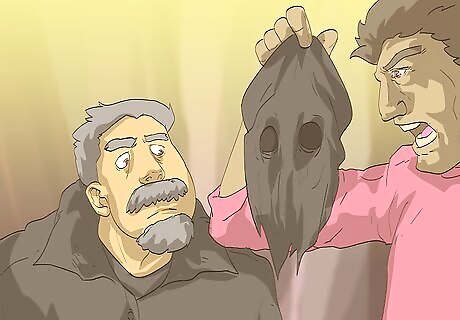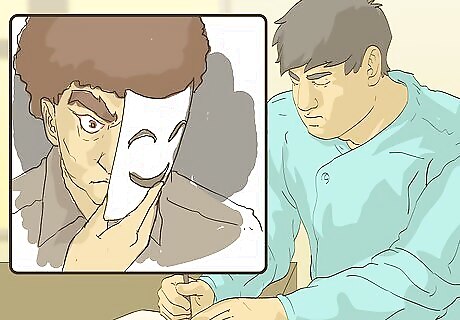
views
Starting the Novel

Choose a thriller type. There are several different types of thrillers. Choosing a type can help you determine the plot of the novel. The most common types of thrillers are: Psychological thriller: This type of thriller focuses on the psychological motives of the characters in your novel. Psychological thrillers usually include a main character who is mentally disturbed. (Ex. Family problems, the death of relatives, etc. Mystery thriller: This type of thriller focuses on the solving of a mystery, but in a fast-paced, intense environment.(Theft, murder, suicide) Science Fiction thriller: This type of thriller uses a lot of the themes and ideas in the science fiction genre. (Ex. Mutation, zombies, monsters, etc.) Spy thriller: This type of thriller focuses on spies and espionage.(Ex: Assassination, elimination, kidnapping, etc. Military thriller: This type of thriller is based on wars, whether real or fictional.(Ex: Wars, nuclear projectiles, hacking, etc.

Brainstorm story ideas. A good thriller comes from a strong story idea. Most thrillers are built around a protagonist who falls victim to another character or has to fight against another character. Sit down and brainstorm story ideas for your novel that are specific to you and your perspective. For example, you may have a story idea about death and rebirth, where a character comes close to death and then reaffirms themselves. Or you may have a story with a hero who prevents a crime. Another option is a story idea where a character prevents a disaster and improves society by solving a problem or dilemma.

Develop engaging characters. Good thrillers will also have interesting, engaging characters to carry the story forward. Your protagonist or main character should be complex and have a detailed backstory, which is the history of a character or their past. Avoid using stock characters in your novel, as this can take all the energy out of the story and make it feel predictable for the reader. Avoid stock characters often found in thriller novels, like the hard-boiled detective, the cold, button-downed FBI agent, or the eager young reporter. Make your characters more complex and specific. For example, you may have a detective that is blind and travels everywhere with a service dog, or an FBI agent who has a shady past and is eager to solve a difficult case. Think about different traits and qualities you can give your characters to make them unique and not a stereotype.

Read examples of thriller novels. To get a better sense of the genre, read examples of thriller novels. Try to read a variety of different thrillers and different types of thrillers so you get a sense of what is being published. You may read: The Silence of the Lambs by Thomas Harris The Girl With The Dragon Tattoo by Stieg Larsson Rebecca by Daphne Du Maurier The Talented Mr. Ripley by Patricia Highsmith The Haunting of Hill House by Shirley Jackson
Writing the Novel

Plot out the novel. To make writing the novel much easier, plot out your novel. Use a plot diagram to plot out the novel, making sure you keep the stakes high and the conflict going in the plot. A plot diagram will have exposition, the inciting incident, rising action, climax, falling action, and resolution. You can also use the snowflake method to plot out the novel. The snowflake method consists of a one-sentence summary, a one paragraph summary, character synopses, and a spreadsheet of scenes.

Begin with a bang. Start the thriller novel with a scene right in the action. Starting with action will throw the reader into the scene right away and assure them they are in for some major thrills. Introduce the crime or describe the protagonist in a the middle of a dilemma or major issue. Avoid including backstory or exposition in the opening pages of the novel. You can do this later. Start with the most interesting or engaging moments first. For example, you may start a thriller with a description of a killer hunting down a victim. This will immerse the reader in the world of the story right away.

Maintain high stakes. As the novel goes on, make sure the stakes are always high for the main character and for the reader. This means putting your main character in situations that are difficult or risky. Keep conflict going between characters. Create obstacles that get in the way of the character solving a crime or achieving what they want. Make the main character’s life full of complications or issues. For example, maybe you have a thriller where a young, eager FBI agent wants to solve a difficult case. You may make it difficult for the agent to achieve their goal by causing evidence to be lost in a fire or by having a witness go missing.

Keep the action moving. Do not include any unnecessary information or information that does not further the plot. Make sure the action moves forward continually in the novel and that the pace is always fast. Thriller are at their best when they are action packed and focus more on plot than anything else. For example, rather than include long sections of backstory for your main character, focus instead on getting the main character from scene to scene. Weave in backstory into a scene when necessary and keep the plot moving at all times.

Build to an exciting climax. Most good thrillers will have an exciting climax, often three-quarters of the way into the novel. The climax is the moment when the stakes are the highest and the story is at its highest point of suspense and tension. Your main character may confront the antagonist of the novel in the climax. They may solve the main problem or issue in the story. Or they may come to a realization that shifts or changes their world view. For example, the climax of the novel may be the moment your main character unmasks the killer. Or it may be when the main character realizes the solution to a major issue or problem in the story.

End on a high note. Wrap up the novel on a high, suspenseful note. Rather than try to wrap up all the loose ends in the book, focus on ending on a scene that will keep the reader guessing. Show the main character making a decisive act in the last scene. Or have the main character come to a realization in the last scene that shows they have changed or shifted in the course of the novel. For example, you may have a long, elaborate foot chase at the end of the novel, with one last scene between the FBI agent and the killer.
Polishing the Novel

Read over the first draft. Once you have completed the novel, read over the first draft. Read it out loud to yourself. Notice if the draft moves quickly and efficiently. Check if there are any plot holes. Look for any moments where you can sharpen or deepen your characters.

Show the draft to others. You can also get feedback from others on the draft to make it stronger. Show the draft to a writing group or to a writing mentor. Enroll in a thriller writing class and have the draft workshopped there. You can also show the draft to friends and family for their perspective and advice. Be open to constructive criticism, as it will often make the novel stronger.

Revise the draft for action, suspense, and plot. Once you have received feedback on the draft, revise it for action, suspense, and plot. Ask yourself, is this scene as suspenseful as it could be? Is there enough action in the novel as a whole? Does the plot make sense and keep readers on the edge of their seat?




















Comments
0 comment